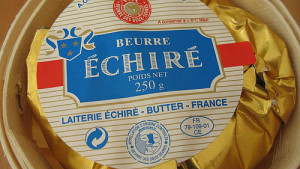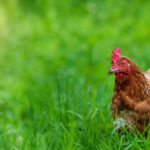 AOC, or Appellation d’Origine Controlee, is a designation given to any agricultural product in France whose character is dependent on the place where it is made. AOC is the ultimate meaning of terroir and environmentally sound farming.
AOC, or Appellation d’Origine Controlee, is a designation given to any agricultural product in France whose character is dependent on the place where it is made. AOC is the ultimate meaning of terroir and environmentally sound farming.
In France, there are more than 300 wines, for example, with an AOC designation on their labels. Over 40 cheeses have the AOC designation (Roquefort was the first in 1925). Other products with AOC status include poultry from Bresse, salt marsh lamb from the Bay of the Somme, eight different varietals of honey from the island of Corsica, and lentils from Le Puy-en-Velay. Then, of course, there is French butter with five recognized AOC regions.
In My Paris Kitchen, David Lebovitz’s latest cookbook, he writes, “There are two kinds of butter in France: the good kind, and the great kind.” Several years ago, I read an article on David’s tracking down Pascal Beillevaire butter (read here). The official name of this butter is beurre cru baratté à l’ancienne, and, as David explains, it is “riddled with lots of little flecks of salt from Nourmotier.” David was told not to refrigerate the butter or it would lose its buttery aroma, and, mon Dieu, who would want that? You won’t find it sold here in the States because Pascal Beillevaire butter is made from raw milk and not allowed into the U.S.
So what is the difference between French butter and American butter? American butter must contain at least 80 percent butterfat. French butter is usually 82 percent. And as an article in the NYT points out, a two percentage point difference may sound measly, but butter is about flavor, texture and workability (especially in baking), and two percent more butterfat counts a lot.
On a recent visit to Newport’s Le Petit Gourmet (Bellevue Ave), purveyor of domestic and imported cheeses and prepared foods to be eaten in shop or taken home, it was a treat to come upon an AOC butter that is the gold standard of French butters. Beurre d’Echire is produced from milk that comes from cows grazing on land that is “open to the spray from the sea.” These farms are 19 miles or less from the small village of Echire, between Poitiers and La Rochelle on the Atlantic coast. Not only is it the best butter Dick and I have ever tasted, but it also is loaded with Vitamin A. I’ve bought goats-milk butter and an imported Italian butter from Parma, both of which had 13% V-A, but Beurre d’Echire, with its incomparable rich taste and 19% Vitamin A, is a hands-down winner.
David Lebovitz, former pastry chef for Alice Water at Chez Pannise in Berkeley, is a fan of butter laced with gros cristaux de sel—big crystals of salt. Even in baking, David doesn’t get too worked up about using salted or unsalted butter (My Paris Kitchen, pg, 16). Just use a little less salt than called for in the recipe.
Butter does not do well in high heat—roasting and frying break down butter’s best qualities. But do slather Beurre d’Echire on your morning baguette, use it to make a beurre blanc sauce, or infuse it with herbs and allow it to slowly melt on fish, poultry or meat. At any rate, look for more butterfat and certainly more vitamin A.
Bon appetit,
Debbie
Editor-in-Chief
Richardcyoung.com
Related video:
If you’re willing to fight for Main Street America, click here to sign up for the Richardcyoung.com free weekly email.






